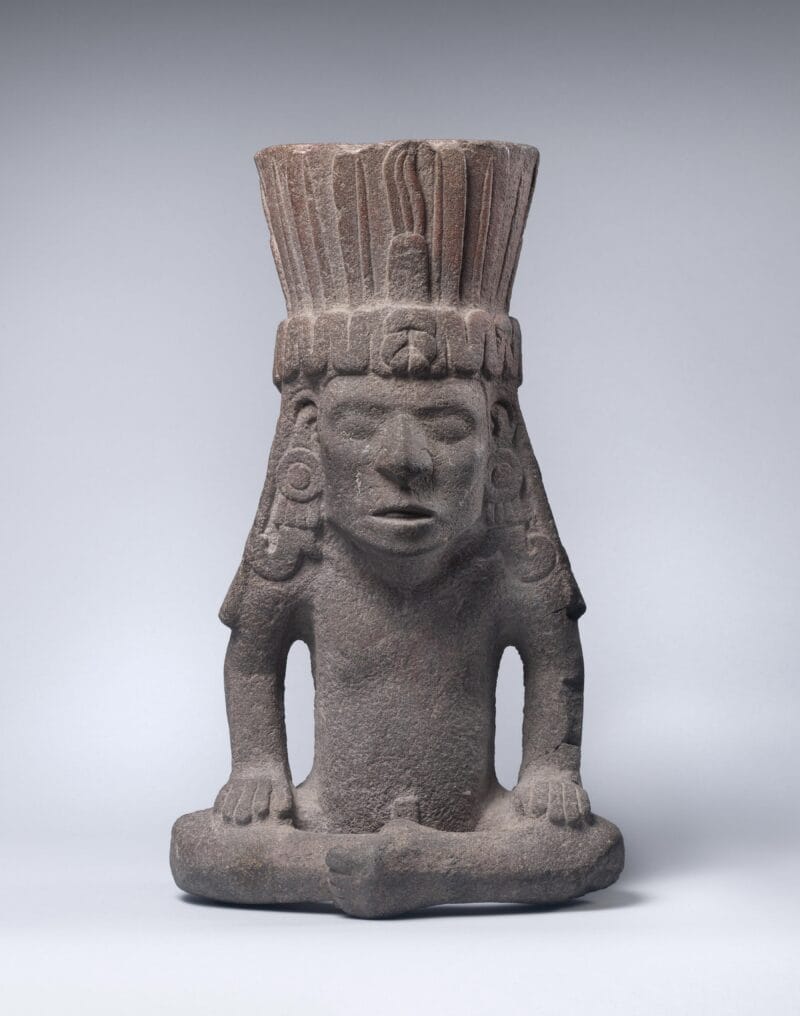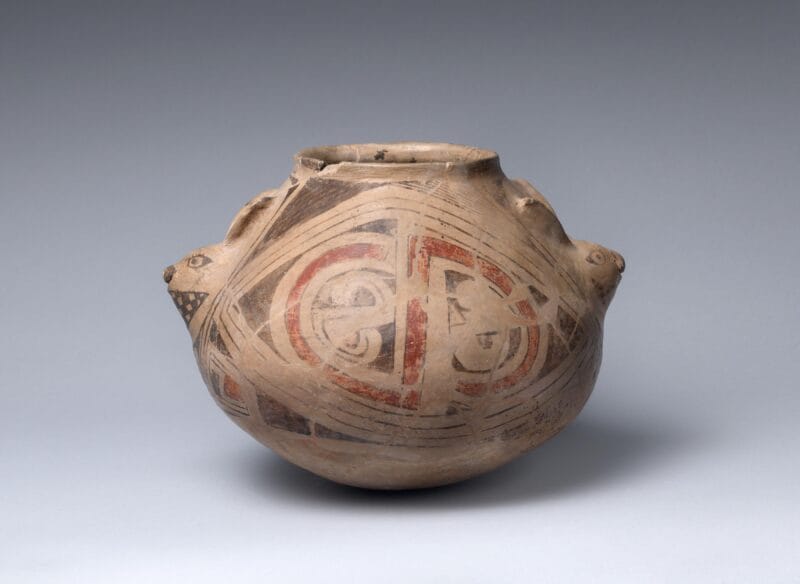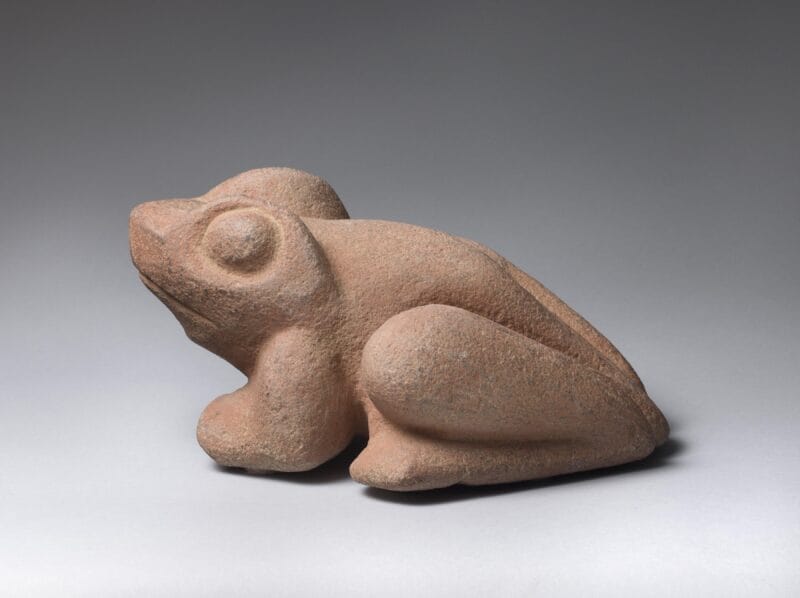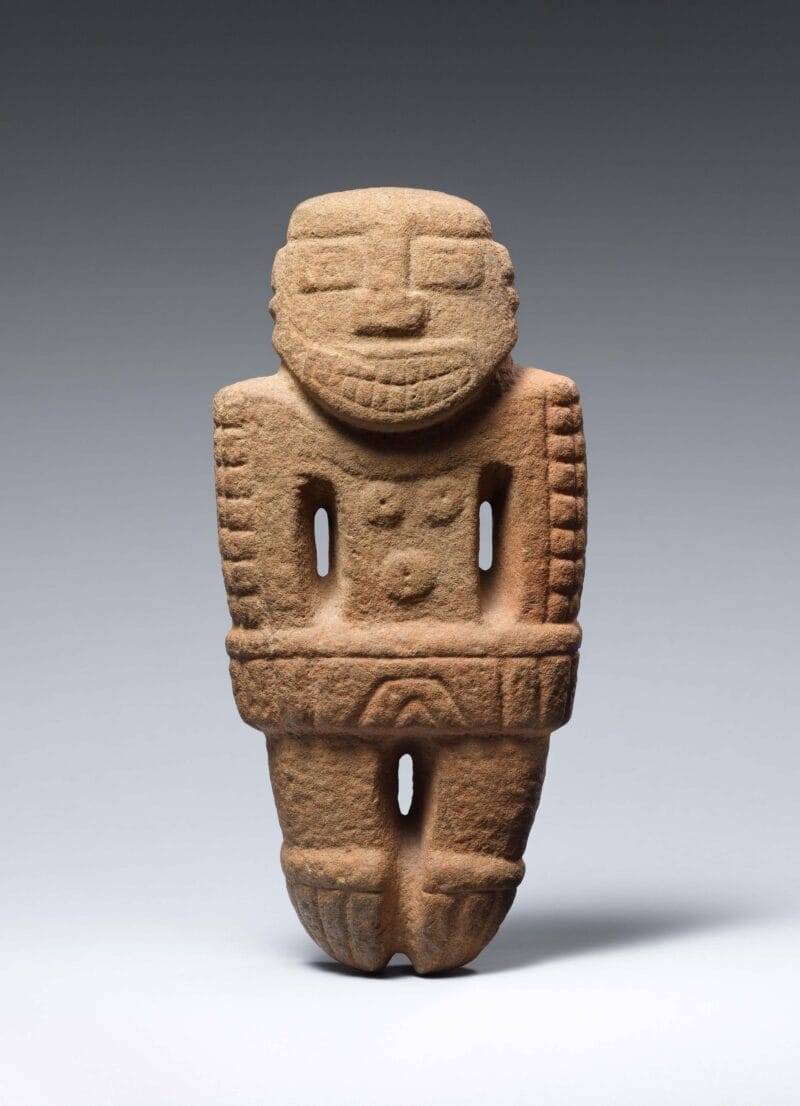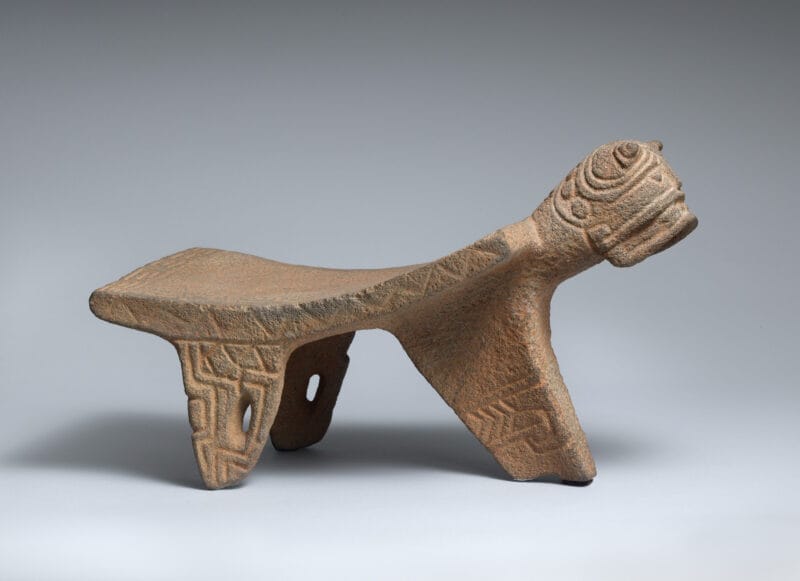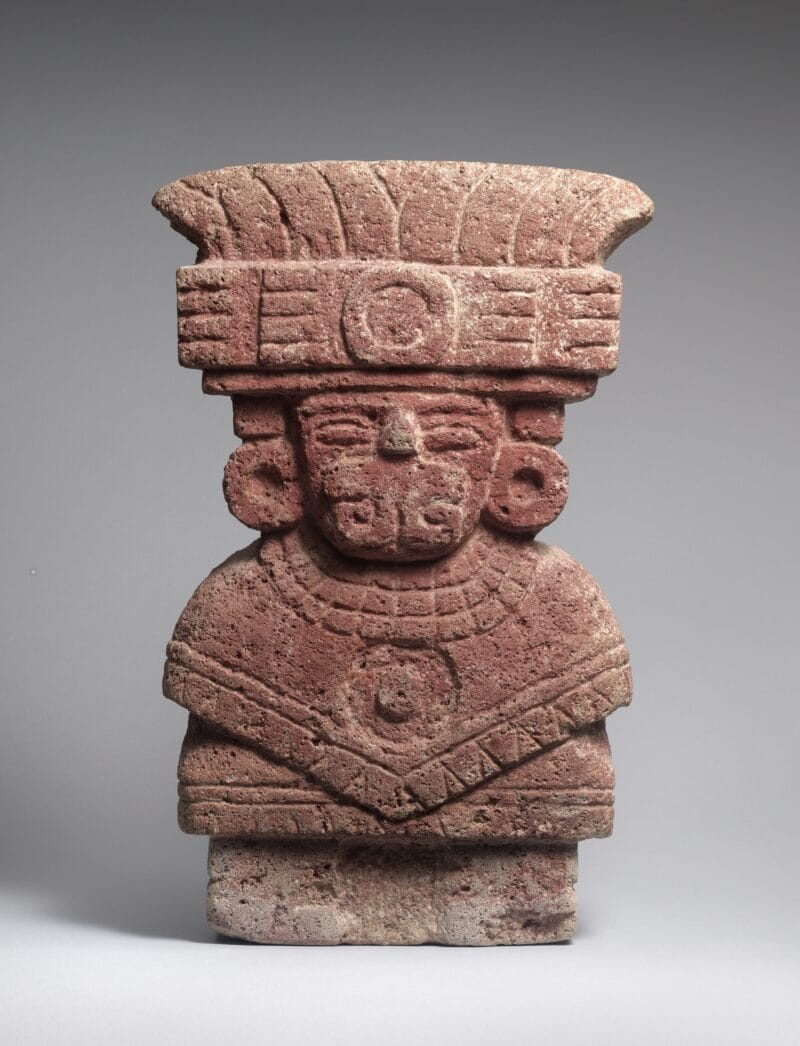
About the Object
Metates, like this example in the shape of a harpy eagle, were mostly used to grind maize for food. Scholars argue that eagle and other avian (bird) effigy metates were likely associated with ideas concerning the departure of the soul from the body at death. This also may have become linked with a similar experience described as the result of ritual consumption of hallucinogenic plants. Among the Diquis, birds were also believed to be linked with ideas and rituals concerning the sun and solar eclipses. Keeping track of these would help ensure bountiful harvests in order to feed the population and maintain social order.
Additional Information
Scholars believe that the Diquis, like their Guanacaste or Nicoya forebearers across what is now Panama, also employed metates like this to prepare fruits, nuts, and hallucinogens or, in some cases, to create ceramics. This ceremonial metate is carved from volcanic stone and includes “mat symbols,” and may reveal links with Mesoamerican cultures such as the Maya. This lends evidence to the theory that these ceremonial metates may have been used as “thrones” among the elite.
[Throckmorton Fine Art, New York, NY];
The Jan T. and Marica Vilcek Collection, 1996-2010;
Gift to The Vilcek Foundation, 2010;

